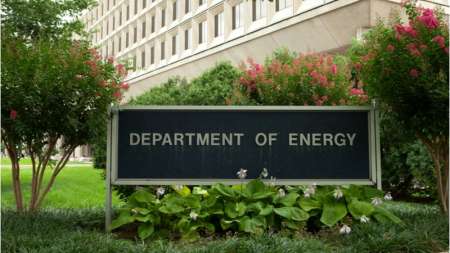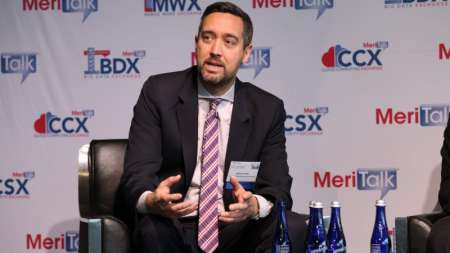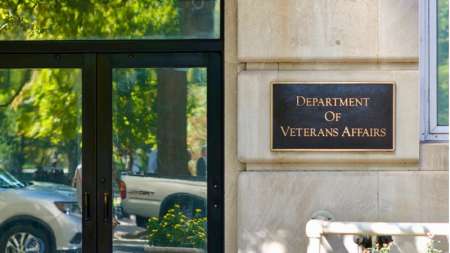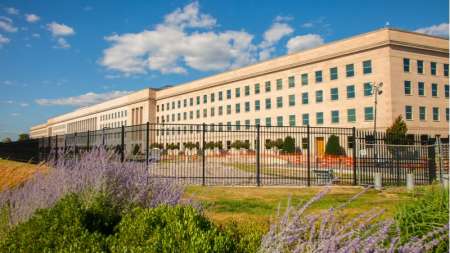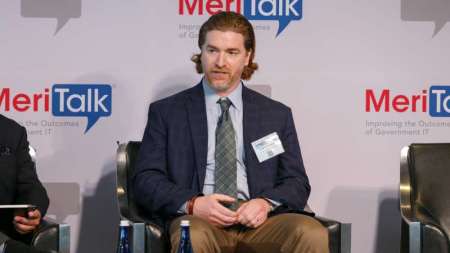The Department of Energy (DoE) has awarded Verizon two digital communications modernization contracts totaling $34.6 million, utilizing the General Service Administration’s Enterprise Infrastructure Solutions (EIS) contract vehicle, the telecommunications company announced Dec. 1. […]
The Department of Defense (DoD) is looking to industry for help in bolstering the cybersecurity of U.S. allies and partner nations, said DoD’s Mieke Eoyang, deputy assistant secretary of defense for cyber policy, at C4ISRNET’s CyberCon 2021 event on November 10. […]
Cloud security provider Zscaler said that its Zscaler Private Access (ZPA) service has received a provisional authorization to operate at Impact Level 5 as published in the Defense Department’s Cloud Computing Security Requirements Guide. […]
Long-time Federal government IT and cybersecurity leader Karen Evans is heading to the Cyber Readiness Institute (CRI) – a New York-based nonprofit that aims to advance the cyber readiness of small and medium-sized businesses in order to improve the security of global supply chains – as the organization’s managing director. […]
Microsoft is warning that it has seen Nobelium – the Russian nation-state threat group responsible for the SolarWinds software supply chain hack – trying to recreate the same approach that allowed it to gain access to Federal government systems, according to an Oct. 24 blog post from the company. […]
The Intelligence and National Security Alliance (INSA) released a new paper on October 25 that details what it calls onerous implementation requirements of the government’s Controlled Unclassified Information (CUI) Program, and offered eight recommendations to improve the program. […]
The Department of Defense announced the members of its recently restarted Defense Business Board, one of 16 advisory boards recently restarted after a Feb. 3 pause. […]
Dominic Sale, who for years helped lead Federal government IT modernization efforts at the General Services Administration (GSA), left government service earlier this month for a new position with Dynamic Integrated Services (DIS), a provider of IT, enterprise, and communications solutions to government and other customers. […]
At the highest levels of the Federal government and the private sector, officials have recognized that cybersecurity is a national security issue. A series of policy and technical documents and high-level meetings this year have reinforced this notion. Chief among them is President Biden’s cybersecurity executive order (EO), which outlines a wide-ranging and ambitious series of actions Federal agencies must take to better secure government operations. MeriTalk recently talked with Jim Richberg, field chief information security officer at cybersecurity firm Fortinet, who is uniquely qualified to assess the potential impact of the cybersecurity EO and the actions that agencies must take to realize its promise. Prior to joining Fortinet, Richberg was the senior federal executive focused on cyber intelligence within the U.S. intelligence community. He helped build the discipline of cyber threat intelligence analysis and is an innovator in measuring cyber performance, risk, and return on investment. […]
The Department of Defense (DoD) has signed a seven-year, $374 million contract with Concur Technologies that makes the company the sole source for DoD’s Defense Travel Modernization (DTM) project, DoD announced Sept. 15 on SAM.gov. […]
Wireless service provider T-Mobile USA today increased its reported totals for customer accounts affected by a cyberattack that the company disclosed earlier this week. […]
Wireless service provider T-Mobile USA confirmed reports that hackers succeeded in gaining unauthorized access to some of its data, but said it was too early to tell whether that involved any “personal customer data.” […]
A recent study found a host of vulnerabilities in the use of open-source components in commercial off-the-shelf (COTS) IT products, which undergo less stringent regulation in their use by the Federal government. […]
The Department of Veterans Affairs (VA) awarded a seven-year, $497 million contract to enterprise IT provider Peraton to provide IT infrastructure-as-a-managed-service (IaaMS), the firm announced August 2. […]
While the steady performance of most large Federal agencies on the latest version of the FITARA Scorecard drew notes of praise from leaders of the House Government Operations Subcommittee at their July 28 hearing to review the grades, the central focus on the hearing – cybersecurity and IT modernization – got the most attention from private sector tech leaders. […]
Senate-approved legislation that would boost Federal funding for U.S.-based semiconductor manufacturing and provide the National Science Foundation (NSF) with another $52 billion over five years for research initiatives received strong endorsements from private sector witnesses at a July 15 Senate Commerce, Science, and Transportation Committee hearing. […]
With many more people teleworking in 2020 due to the COVID-19 pandemic, cyberattack surfaces changed and expanded, and as many worked from home with Internet of Things (IoT) devices abandoned at the office, threat actors took advantage. Part of the fallout from those realities, according to two Zscaler studies, was that malware attacks on IoT devices connected to corporate networks increased by 700 percent year-over-year in 2020, compared to the firm’s 2019 study. […]
While most Federal agencies are at least dipping toes into the artificial intelligence (AI) pool, new MeriTalk research finds some are struggling to incorporate the technology more broadly into operations. […]
The Defense Department (DoD) said today it was taking steps to cancel its existing Joint Enterprise Defense Infrastructure (JEDI) cloud services contract after three years of work that left the contract tied up in court, and the Pentagon without benefit from the $10 billion deal awarded to Microsoft. […]
The Pentagon’s Defense Innovation Unit (DIU) said July 1 that cloud security provider Zscaler, Google Cloud, and McAfee Public Sector have successfully completed Secure Cloud Management (SCM) prototypes as part of a year-long process under which DIU has been evaluating service offerings that “deliver fast, secure, and controlled access by DIU users to software-as-a-service (SaaS) apps directly over the internet.” […]
The mission must continue – and that means networks must be up and secure, no matter what. Now more than ever before, networks can provide visibility at every layer, so agencies can identify and respond to service interruptions immediately. Network-as-a-sensor capabilities enable this deep awareness. […]
The United States Air Force (USAF) is looking for a contractor to provide long-haul communications and system network administration for its Remotely Piloted Aircraft (RPA) Squadron Operation Center (SOC) Enterprise, according to a request for proposal (RFP) posted to SAM.gov June 17. […]
As vaccination rates increase and the United States nears closer to a broader return to offices, Federal IT officials in the Department of Defense (DoD) are reporting that their organizations’ IT environment is more complex now than two years ago, according to a recent Axonius and MeriTalk survey. […]
With numerous recent high-profile attacks, ransomware has been everpresent in the news and discourse around the nation’s cybersecurity. The threat landscape has evolved rapidly, with credit card hackers quickly turning the scheme into million-dollar ransoms in less than a decade. […]
A nonprofit group is pushing for the creation of a National Advanced Industry and Technology Agency that would be responsible for creating policies to “ensure long-term U.S. advanced industry leadership,” according to a June 17 release. […]
The Defense Information Systems Agency (DISA) has awarded Cisco a new $1.18 billion contract, the Department of Defense (DoD) announced June 14. […]
Last fall, the Department of Homeland Security’s (DHS) Cybersecurity and Infrastructure Security Agency (CISA) announced a binding operational directive (BOD) requiring the Federal government to develop and publish vulnerability disclosure policies (VDP). CISA announced today it has chosen vendors for its VDP platform. […]
The Biden administration is pushing hard to help fight the rise of ransomware attacks on private industry, and the White House is taking steps on multiple fronts to work with the private sector to combat the issue. […]
With more and more people putting their trust in cryptocurrencies, the Internal Revenue Service (IRS) is beginning to research how to crack and decrypt crypto wallets that have been subject to seizure and forfeiture, according to a May 20 request for information (RFI) posted to SAM.gov. […]
As Federal agencies and organizations are looking to make the move to zero trust security architectures, the Trusted Internet Connections (TIC) program should help guide that transformation, Sean Connelly, TIC program manager for the Department of Homeland Security’s (DHS) Cybersecurity and Infrastructure Security Agency (CISA) said May 12 at MeriTalk’s CDM Central: the Age of the Cyber Defender virtual conference. […]

